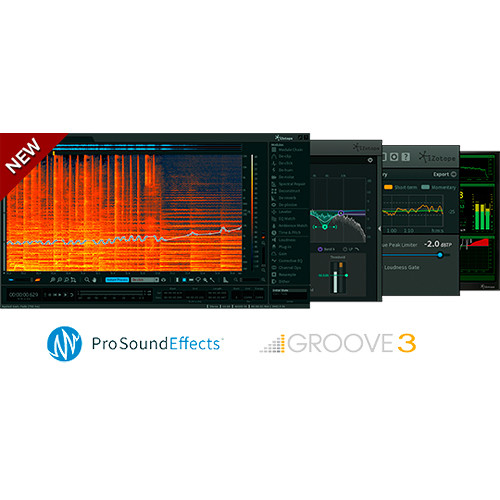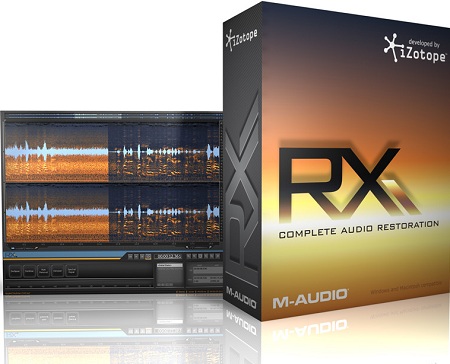iZotope’s award-winning RX 6 Audio Editor is the industry standard for audio repair, restoration, and enhancement. It offers a comprehensive suite of tools focused on alleviating common to complex audio issues. Post production professionals, audio engineers, and video editors alike use RX to transform problematic recordings into production-ready audio.
- Izotope Rx Compare Features 2017
- Izotope Rx Compare Features Chart
- Izotope Rx 7 Torrent Windows
- Izotope Rx Compare Features 2016
A: Mix Assistant is the new assistive feature in Neutron 3 Advanced. In Mix Assistant, you can choose Track Enhance to run the assistant on your track and create a custom preset, or you can choose Balance to balance the track levels in your session. RX standard has different set of processing modules, but functionality of each module remains the same as for advanced version. Of course with regards to resampler, it's my assumption from use, I haven't done a null test or so.
Design Philosophy
IZotope RX 4 vs 3 Feature Comparison. It seems like just a few months ago that I wrote an article comparing iZotope’s RX3 audio restoration software with its predecessor, RX2. At that time, RX2 had been known as a respected tool for polishing troublesome audio. The software hadn’t seen a major update in years, however. Compare mixing features and benefits in iZotope’s Neutron Elements, Neutron 3 Standard, and Neutron 3 Advanced. Get best price for iZotope RX 7 along with all features. Read all iZotope RX 7 reviews and compare with all Audio Editing Software softwares & apps on Techjockey.com. Talk to Tech Expert. Most RX modules feature a Preview button in the bottom panel of the module window. Some modules don’t support Preview because of the time-intensive nature of their processing, in many of these cases the Compare settings option is available (explained below).
The RX 6 Audio Editor is a visual, selection-based editing environment. Most of its user interface is devoted to the Spectrogram/Waveform display, an integral part of the RX editing workflow. The display enables you to refine and visualize your audio, allowing for better recognition and selection of problem areas.
Using the spectrogram to identify audio problems

Izotope Rx Compare Features 2017
- See the Identifying Audio Problems chapter for tips on using the spectrogram to spot common audio issues.
RX Audio Editor Feature Comparison Chart
| Features | Elements | Standard | Advanced | |
|---|---|---|---|---|
| Batch Processor | X | X | X | |
| Clip Gain | X | X | X | |
| Composite View | X | X | NEW! | |
| Find Similar | X | X | ||
| Instant Process | X | X | ||
| Markers & Regions | X | X | X | |
| Module Chain | X | X | X | |
| Module List View Filters | X | X | X | NEW! |
| mp3 Export | X | X | NEW! | |
| Plug-in Hosting | X | X | X | |
| Recording & Monitoring | X | X | X | |
| Spectrum Analyzer | X | X | X | |
| Spectral Editing Tools | X | X | X | |
| Waveform Statistics | X | X | X |
RX Module Comparison Chart
| RX Modules | Elements | Standard | Advanced |
|---|---|---|---|
| Ambience Match | X | ||
| Azimuth | X | ||
| Breath Control | X | X | NEW! |
| Center Extract | X | ||
| De-bleed | X | X | NEW! |
| De-click | X | X | X |
| De-clip | X | X | X |
| De-crackle | X | X | |
| De-ess | X | X | NEW! |
| De-hum | X | X | X |
| De-plosive | X | X | |
| De-reverb | X | X | |
| De-rustle | X | NEW! | |
| De-wind | X | NEW! | |
| Deconstruct | X | ||
| Dialogue Isolate | X | NEW! | |
| Dither | X | X | |
| EQ | X | X | |
| EQ Match | X | ||
| Fade | X | X | X |
| Gain | X | X | X |
| Interpolate | X | X | |
| Leveler | X | ||
| Loudness | X | ||
| Mixing | X | X | X |
| Mouth De-click | X | X | NEW! |
| Normalize | X | X | X |
| Phase | X | X | X |
| Pitch Contour | X | X | |
| Resample | X | X | |
| Signal Generator | X | X | X |
| Spectral De-noise | X | X | |
| Spectral Repair | X | X | |
| Time & Pitch | X | X | |
| Voice De-noise | X | X | X |
RX Plug-in Comparison Chart
| RX Plug-ins | Elements | Standard | Advanced |
|---|---|---|---|
| Ambience Match | X | ||
| Connect | X | X | |
| De-click | X | X | X |
| De-clip | X | X | X |
| De-crackle | X | X | |
| De-ess | X | X | NEW! |
| De-hum | X | X | X |
| De-plosive | X | X | NEW! |
| De-reverb | X | X | |
| Monitor | X | X | |
| Mouth De-click | X | X | NEW! |
| Spectral De-noise | X | X | |
| Voice De-noise | X | X | X |
This help guide is shared by RX 6 Elements, RX 6 Standard and RX 6 Advanced. The following tags are used throughout the manual to differentiate the feature sets:
- [STD & ADV] Indicates that a feature is included in RX 6 Standard and RX 6 Advanced.
- [ADV] Indicates that a feature is exclusive to RX 6 Advanced
The RX Audio Editor is designed to give you a range of processing options. Most of the modules in RX feature multiple processing modes, ranging from fast algorithms that sound great on most material to very time-intensive algorithms for critical applications.
Understanding the Presets, Preview and Compare controls will help you save time, especially when taking advantage of RX’s more powerful processing modes.
Presets
Each module in the RX Audio Editor features a preset menu that allows you to choose between factory presets and custom presets that you have saved. Any preset saved in a module in the RX Audio Editor can be opened in the corresponding RX plug-in, when applicable.

- Add Preset: Creates a new preset
- Remove Preset: Removes a preset from the drop-down list
- Rename Preset: Changes the name of a preset
- Set Preset Shortcut: Allows you to define a keyboard shortcut for any preset in order to recall and apply different module settings quickly
- Import Preset: Allows you to import presets (from another machine or another user, for example)
- Reload Preset: Rescans your preset directory for this module in order to refresh the available preset list
- Explore Preset/Reveal Presets in Finder: Opens Windows Explorer or Finder window to the location of your presets on disk
Preset directory locations:
- On Windows: C:Documents and SettingsusernameMy DocumentsiZotopeRX 6Presets
- On Mac: username/Documents/iZotope/RX 6 Audio Editor/Presets/
Module Footer Controls
Preview
Most RX modules feature a Preview button in the bottom panel of the module window. Some modules don’t support Preview because of the time-intensive nature of their processing, in many of these cases the Compare settings option is available (explained below).
Preview allows you to make adjustments to controls and hear the results without the need to process and undo processing multiple times to achieve your desired results.
Preview will apply to your active selection or if no selection is made, Preview playback will start from the current playhead position. When Loop is enabled in the Transport, Preview playback will loop.
PREVIEW [Shift-Space]: Plays a pre-rendered preview of the module’s current settings on the selected audio. During preview, module settings can be adjusted and adjustments will be heard within the length of the current preview buffer. For most modules, the Preview buffer size is about a half of a second long, but the Preview Buffer Length can be adjusted by accessing the Preview Options, explained below.
BYPASS [Shift-B] Bypasses module processing during preview.
Preview Options [+]: Allows adjustment of the Preview Buffer size.
For more CPU-intensive settings, like the highest quality algorithms in Spectral De-noise and the highest quality De-click settings, RX can buffer playback to allow you to preview these slower than real-time processes.
Note about Preview buffering
When Previewing module processing, the active buffer length for preview rendering is tinted red in spectrogram/waveform display.
Pre- and Post-Roll
When previewing an effect, it is often very helpful to hear a small portion of the unprocessed audio before hearing your processed selection. This can provide a much clearer comparison and allow you to more easily discern whether or not the current processing settings are producing the desired effect.
Izotope Rx Compare Features Chart
By default, RX will play back one second of unprocessed audio before and after the current selection when previewing your processing. The Pre- and Post-roll times can be defined in the Preferences > Misc window. RX can play up to ten seconds of audio before or after the previewed selection. Pre- and Post-Roll will also occur when previewing a looped region of audio
Izotope Rx 7 Torrent Windows
How to disable Pre- or Post-roll
Set the Pre- and Post-roll times in the Preferences > Misc tab to 0
Ableton live 10 free mac. Link Tap 120.00 4 / 4 1 Bar 1.
Tip
Izotope Rx Compare Features 2016
Pre- and Post-roll can also be simulated manually by holding Control (Windows) or Command (Mac) to set the playhead to any desired position while preserving your audio selection. Once the playhead is set, clicking on Preview in the desired module will then start the Preview playback from the playhead position.
Compare
When you want to quickly try a lot of different settings, use the Compare feature. In some cases, you might not know what settings of a module will give you the best, most transparent results. By hitting the Compare button instead of the Process button, you can audition multiple settings of the same module and then audition the results side by side in the Compare Settings.
While one group of settings is processing in the background, you can return to the module and try a different group of settings. Learning to use the Compare Settings tool can save you from having to apply and undo a process multiple times just to find the right settings, making it a valuable time-saving feature.
Another advantage to using the Compare Settings tool is seeing the effect your settings have in the spectrogram/waveform display and spectrum analyzer.
- Process Comparison List: Each time settings are sent to the Compare window, a new list item is created, by default titled “Settings 1,” “Settings 2,” etc.
- Preview: To hear (and see) the result of an item in the list, select that item and hit Preview.
- View Settings: Updates the controls to reflect the settings selected in the Process Comparison List
- Remove: Remove an item from the list.
- Rename: Allows you to rename items with more descriptive names.
- Process: Apply the selected list item to the audio file.